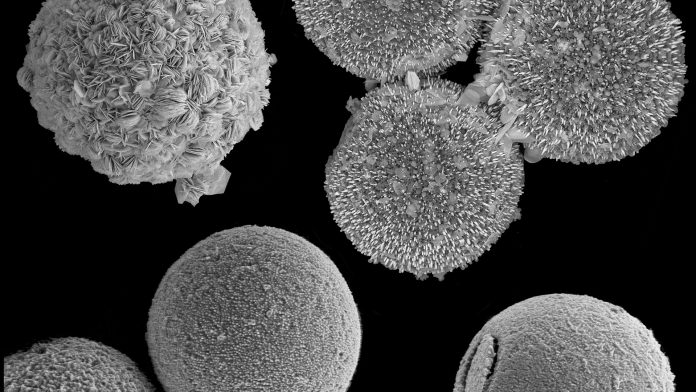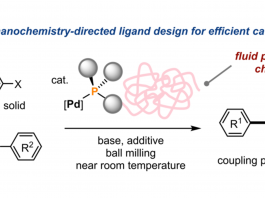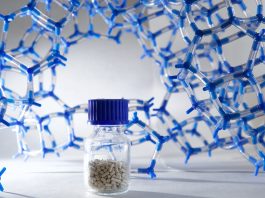A team of scientists have successfully turned single-cell algae into functional perovskite materials.
The team, led by researchers at the B CUBE – Center for Molecular Bioengineering at TU Dresden, converted mineral shells of algae into lead halide perovskites with tuneable physical properties.
The new materials have unique nano-architectures unachievable by conventional synthetic production. The method can be applied to the mass production of perovskites with tuneable structural and electro-optical properties from single-celled organisms.
The study’s corresponding paper, ‘Recruiting Unicellular Algae for the Mass Production of Nanostructured Perovskites,’ was published in the journal Advanced Science.
The many uses of perovskites
Perovskites are materials that are increasingly popular for a wide range of applications because of their remarkable electrical, optical, and photonic properties. They can potentially revolutionise the fields of solar energy, sensing and detecting, photocatalysis, lasers, and more.
The properties of perovskites can be tuned for specific applications by changing their chemical composition and internal architecture, including the distribution and orientation of their crystal structure. At the moment, the ability to influence these properties is massively limited by manufacturing methods.
The team at TU Dresden aimed to overcome these limitations and created perovskites with unique nano-architectures and crystal properties from algae. This method took advantage of years of evolution of these single-celled organisms.
How have these organisms evolved over the years?
“Unicellular organisms have responded over hundreds of millions of years to various environmental factors such as temperature, pH, and mechanical stress. As a result, some of them evolved to produce unique biomaterials that are exclusive to nature,” explained Dr Igor Zlotnikov, research group leader at the B CUBE and lead author of the study.
“Minerals formed by living organisms often exhibit structural and crystallographic characteristics that are far beyond the production capacities offered by current synthetic methods.”
The team focused on L. granifera to modify the perovskites, a type of algae that uses calcite to form shells. Their spherical shells have a unique crystal architecture, aligned radially and spread out from the sphere’s centre outwards.
“The current manufacturing methods of perovskites cannot produce materials like this synthetically. We can, however, try to transform the existing natural structures into functional materials while keeping their original architecture,” said Dr Zlotnikov.
To transform the natural mineral shells of algae into functional perovskites, the team had to substitute chemical elements in calcite. To do this, they adapted a method developed by their collaborators at AMOLF institute in Amsterdam.
The materials are now ready for large-scale use
During the transformation, scientists produced different types of crystal architectures by altering the material’s chemical makeup. This meant that they could fine-tune their electro-optical properties.
Moreover, by converting the calcite shells to lead halides with either iodine, bromide, or chloride, the team could create functional perovskites that are optimised to emit only red, green, or blue light.
Dr Zlotnikov concluded: “We showed for the first time that minerals produced by single-cell organisms could be transformed into technologically relevant functional materials. Instead of competing with nature, we can take advantage of the years of evolutionary adaptation they already went through.”
The method developed by Zlotnikov’s team is ready to be scaled up, opening up the possibility for the industry to take advantage of algae and numerous other calcite-forming single-celled organisms to produce functional materials with unique shapes and crystallographic properties.





